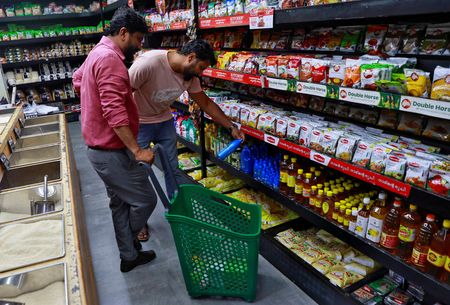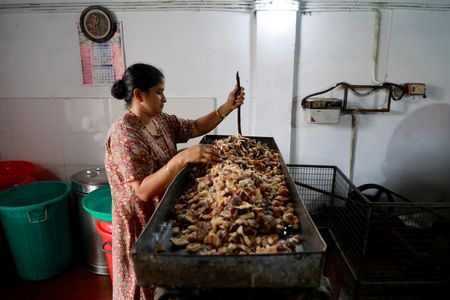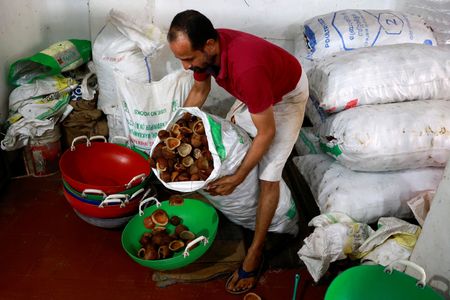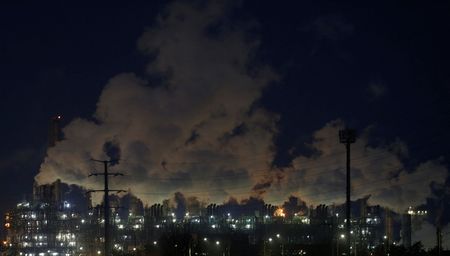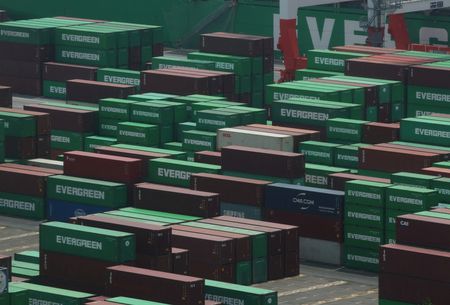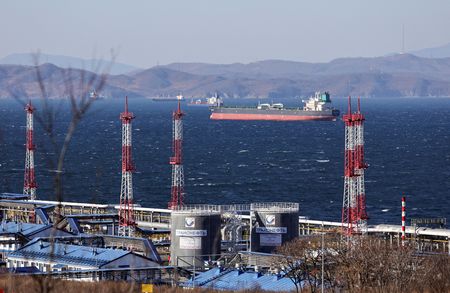By Rajendra Jadhav, Bernadette Christina and Ashley Tang
MUMBAI/JAKARTA/KUALA LUMPUR (Reuters) -Prices of coconut oil are surging in Asia, where top consumer India leads the charge with a tripling in two years, as supply shortages and booming demand for the nutrient-rich water enclosed within turn the kitchen staple into a premium product.
The edible oil is slipping out of the reach of price-conscious consumers, and those accustomed to its distinctive flavour, deeply embedded in regional cuisine, must search harder to find alternatives.
“I will switch to the more affordable refined sunflower oil for everyday cooking and save coconut oil for dishes where its flavour is absolutely irreplaceable,” said Leelamma Cherian, who lives in India’s southern state of Kerala.
The price surge that began in the second half of 2024 was accelerated by output disruptions across major producer nations from India to Southeast Asia, caused by seasons of lower rainfall, extended heat, and more ravages by pests and disease.
Prices in India have nearly tripled in less than two years, to a record 423,000 rupees ($4,840) a metric ton, while global prices surged to an all-time high of $2,990 per ton over the same period.
A group of producer nations, the International Coconut Community (ICC), says growing demand in the face of production limits will keep second-half global prices in the range of $2,500 to $2,700, well over the 2023 figure of about $1,000.
Coconut oil supplies usually improve in Southeast Asia in the second half, and new season output will help ease prices off records, said a Singapore-based vegetable oil trader.
“Still, prices probably won’t drop below $2,000 anytime soon,” he said.
A fall below $1,800 a ton in the next two years was unlikely, he added, pointing to the neglect of plantations and unfavourable weather in recent years as factors likely to delay a broader production recovery, especially at a time when supplies of other similar lauric oils are tight.
“While prices are expected to ease gradually, the current rally is likely to establish a new normal.”
The price surge also affects unripe green coconuts harvested for their electrolyte-laden water, and products such as copra, milk, and powder, while squeezing makers of shampoo and skincare items, who prize the oil for its high content of lauric acid.
SUPPLY SQUEEZE
Globally, coconut oil output is falling as trees age, replanting proves inadequate, and plantations grapple with a shortage of better seed varieties, said Dorab Mistry, a director of Indian consumer goods company Godrej International.
World coconut oil production was 3.67 million tons in 2024–25, with no growth over the past three decades, barring minor annual fluctuations, the U.S. agriculture department says.
As weather conditions increasingly swing from hot, dry spells to sudden heavy rains, both extremes disrupt coconut production, said Joe Ling, executive director of Malaysia’s Linaco Group, a leading supplier.
These days, at least one producing country is affected – if dry weather is not curtailing output in Indonesia or Malaysia, it is highly likely that typhoons are disrupting production in the Philippines, or vice versa, Ling said.
Yields fell in 2023 as the El Niño weather phenomenon brought above-average heat and below-average rains to key growing regions, said a Mumbai-based dealer at a global trading house, who sought anonymity in line with company policy.
The shortfall was only reflected in 2024, since coconuts typically need nearly a year to mature after flowering.
In the wake of years of underinvestment thanks to low prices, coconut production was further hit by the COVID-19 outbreak, as lockdowns brought a slump in demand and prices.
That in turn led farmers to neglect plantations, resulting in lower yields just as demand began to recover when social media influencers drummed up attention to the health benefits of coconut water.
Higher demand for the water prompted farmers to harvest coconuts earlier and further narrowed the supply of mature nuts used to make oil and copra.
Even at higher prices, the perceived health benefits continue to fuel demand for coconut food products, said Ling of Linaco Group.
The rally has led his company to raise prices almost monthly and maintain supplies despite upsetting customers, Ling added.
Coconut oil’s premium over rival palm kernel oil, also primarily produced in Asia, has surged to a record $1,000 per ton, up from the usual $100 to $200. Palm kernel oil prices have also risen, climbing 30% this year.
Any major shift away from coconut oil could drive up prices of alternatives, including palm kernel oil for industry and palm, soy, and sunflower oils for households.
GLOBAL DEMAND
While coconut oil is popular in Asia, demand for copra, coconut cream, and milk is strong in Britain, China, Europe, Malaysia, the United States, and the United Arab Emirates.
To capitalise on rising demand, Indonesian farmers are increasingly shipping whole coconuts instead of extracting oil, said Amrizal Idroes, vice chairman of the Indonesian Coconut Processing Industry Association.
Indonesia’s coconut oil exports fell 15% between January and June, while shipments of items such as desiccated coconut and endocarp coconut rose by 58% annually, government data showed.
Shortages have spurred calls for changes to trade policies that make more oil available at home.
In Indonesia, the Association urged suspension of coconut exports for six to 12 months to stabilise prices, while in India, the Solvent Extractors’ Association asked New Delhi to allow imports of coconut oil and copra.
India regulates imports of coconut oil tightly, with a duty of more than 100% that makes them expensive, and traders required to seek permits from state trading enterprises.
Higher prices have spurred farmers to expand planting, with strong seedling demand depleting most nurseries’ stocks this year, said an official of India’s state-run Coconut Development Board, who sought anonymity.
But yield from new plantations take four or five years to come in, so prospects are bleak for prices to subside quickly.
($1=87.44 rupees)
(Reporting by Rajendra Jadhav, Bernadette Christina and Ashley Tang; Additional reporting by Ashitha Shivaprasad; Editing by Mayank Bhardwaj, Tony Munroe and Clarence Fernandez)

